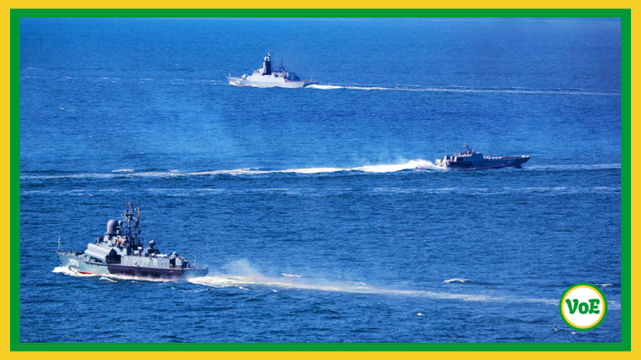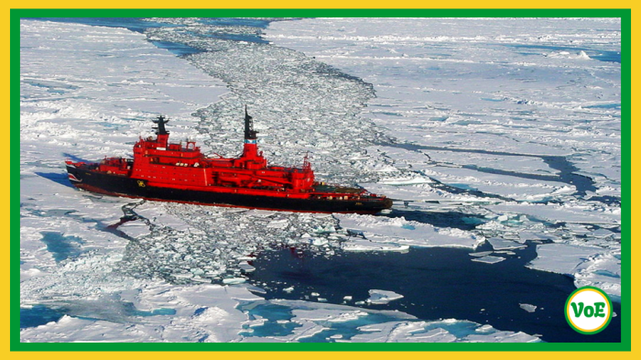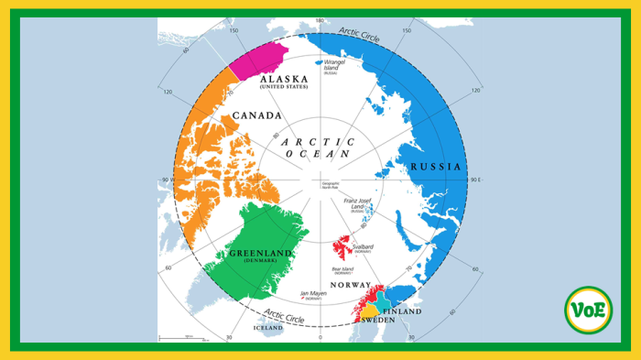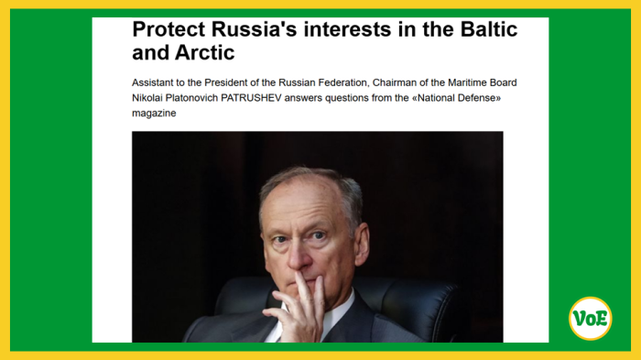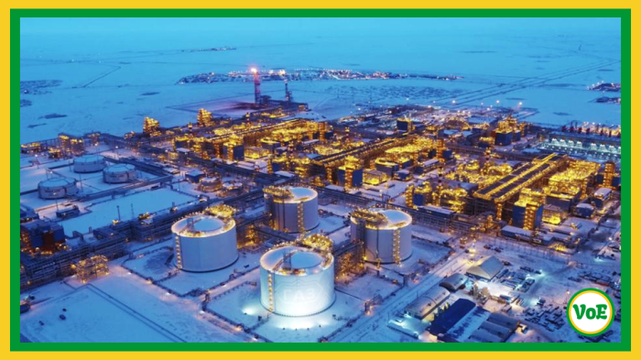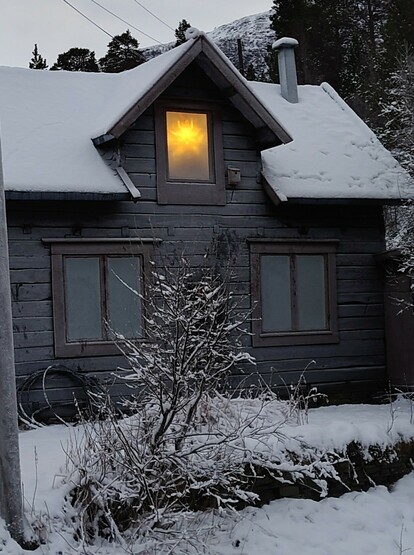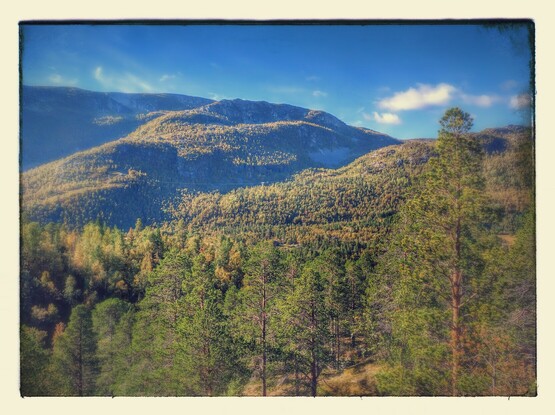Tell your #Senators and Representative: Vote YES on #theArctic Refuge Protection Act. Stop the drilling. #ProtecttheArctic. Protect our shared future. https://click.actionnetwork.org/ss/c/u001.qUXRBnqZ7T8nxbpAcIVwoUsWLkUMWlo_0JmZttSlm38zUwJ9QUdfy6Cxl8IJ8U7wkQlICbbIfaUgQZC9PVK4Chx2xriFwLrHpatCvbYh-iiNhQUJRIxX0K-qJoJOhvxjdv_XV4iM0lAYsXSz9RLyJfEM1ba8wNd7L6hbno-qzED3GE7ci7mdAE32xNpmkm7f1YNAYfJ389p7b0Qtfagz1eKeK5nyCwgKChw6Pw7cghMc8wBaIe9X0_wBZDnK3dkpQ6GZjdxnWP4exgN-uw0dW1E7yEUYwXdVh8Cxr4_drmP6weu6JJWh148loUAK8ZNHw9odDOWfHnL6wQycs0Iyoqib1ZWTyPdUHSMt1Q7pw5U7SoqJYJTQ5krwN2kw1uOyauVgPxii8TVxk_AOH9V8v8mBPkYVJQ8dV5hEvTmw5n4w47_ZDn8Lpkv27xuM8qhtJyraHrdLn9pADCwcyZyWPuDA3nJRsF_etcwjaAeh38FF2D9rVHxhzIvJorXqqRedLYeKeg23oJeB2B1dMI-MyXnpa0h6f9puwSA6DUHA5dorqsEg9IPrloBz-9poOQfxX94vDGDvkDO69JNDr8rEv8RDvj3sxbNfiJoXE4kxuF4/4gz/YJB_1d1uRASv6Zijp2-VTQ/h2/h001.wMF4zN1du23bWFJ2uAN5MZ9gS4CXJnTzz8mQaL_l4l0
#TheArctic
Tensions In The Baltic Sea: Russia’s Assertive Posture Is Challenging NATO
Tensions In The Baltic Sea: Russia’s Assertive Posture Is Challenging NATO
By Uriel Araujo
Tensions in the Baltic Sea escalate as NATO’s growing presence, including Finland and Estonia’s security agreement and potential Gulf of Finland blockade, threatens Russian interests like key ports and energy infrastructure. This shift has prompted Russia to assert its presence more forcefully, as evidenced by its Baltic Fleet’s ‘Safety of Navigation’ exercise.
The Baltic Sea, a historically contested region, has once again become a flashpoint for geopolitical tensions, with recent incidents raising the spectre of broader conflict. The escalating tensions is being described by some analysis—amid the war of narratives—as a reaction to Moscow’s actions but it would be more accurate to describe it as a reflection of deeper systemic pressures driven by Western policies. One may recall that NATO’s expanding presence and provocative manoeuvres in the region have significantly contributed to the current unease.
In May 2025, for example, Poland reportedly intervened after detecting a Russian “shadow fleet” ship near a Baltic Sea cable. This incident followed reports of Russia conducting major naval drills in the region, interpreted by some as a show of force. Additionally, the Russia-Estonia standoff over maritime boundaries has further inflamed tensions, with both sides accusing each other of provocative actions
These incidents, framed by Western media as Russian aggression, are seen in Moscow as defensive responses to encirclement by NATO and its allies. As Gerald Walker notes (an expert writing for Modern Diplomacy), “the Baltic Sea’s strategic importance has grown since Sweden and Finland joined NATO, transforming the region into a near-NATO-controlled waterway. This shift has prompted Russia to assert its presence more forcefully, as evidenced by its Baltic Fleet’s ‘Safety of Navigation’ exercise in early May, which focused on protecting civilian maritime traffic from interception.”
To put it simply, Moscow views the Baltic Sea as a critical strategic space, vital for its economic and security interests. The region hosts key energy infrastructure, including pipelines like Nord Stream, which have been targets of Western sabotage in the past. Russia’s naval exercises, far from being unprovoked, are a response to NATO’s increased military presence, including joint exercises and deployments near Russian borders.
There is an energy angle, as well, one just needs to consider the recent EU memorandum to bolster energy cooperation in the Baltic Sea region, signed by energy ministers of the Baltic Energy Market Interconnection Plan (BEMIP) High-Level Group. It signals a strategic intent to reduce dependence on Russian energy, thereby isolating Moscow economically.
From Moscow’s perspective the overall context has a history. One may recall that the Baltic Sea has long been a contested space, with Russia’s access to its ports being a cornerstone of its maritime strategy since the days of Peter the Great. The expansion of NATO to include Baltic states—Estonia, Latvia, and Lithuania—has placed the alliance directly on Russia’s doorstep, a development Russia views as a direct threat. The recent incidents, including the alleged shadow fleet activities, can be framed as Russia protecting its legitimate interests against the reality of encirclement. Moscow in any case argues that its naval drills are routine and necessary to maintain readiness, especially in light of NATO’s aggressive posturing.
Energy dynamics, as mentioned, further complicate the situation. The Baltic Sea is a critical corridor for energy infrastructure, and recent Western efforts to diversify energy sources are seen as a direct challenge to Russia’s economic leverage. The memorandum signed by Baltic states to enhance energy cooperation is a case in point, aiming to integrate renewable energy and reduce reliance on Russian gas. From Russia’s vantage point, these initiatives are less about energy security and more about geoeconomic/geopolitical manoeuvring to marginalize Moscow. Suffice it to say, such actions risk escalating frictions by framing Russia as an economic adversary amid military tensions .
As I noted in October 2024, the Baltic region’s strategic importance cannot be overstated, with Russia seeking to uphold its position amid growing Western pressure. Finland and Estonia, NATO members, have signed a Baltic Sea security agreement and announced plans to potentially blockade the Gulf of Finland, a vital route for Russian shipping. The Gulf is crucial for Russia, hosting key ports like Primorsk for oil exports and the Leningrad Nuclear Power Plant.
Moscow deems this a violation of the 1982 UN Convention on the Law of the Sea, warning of serious consequences. The Atlantic Alliance’s growing presence, including exercises in Lithuania and a new headquarters in Mikkeli, further fuels Russian concerns about encirclement. As NATO’s expansion continues, the risk of escalation increases in this strategically critical region, thus threatening global stability.
Last month, I further highlighted how NATO’s rhetoric often ignores Russia’s legitimate security concerns, painting it as the sole aggressor in a complex geopolitical landscape. These observations remain relevant, as the current incidents reflect a continuation of this ongoing dynamic. Russia’s actions, while assertive, are not escalatory in isolation; they are responses to a broader pattern of Western containment, which goes beyond the matter of Ukraine as seen in the Arctic as well. In fact, with Sweden and Finland’s NATO membership, the Alliance’s territorial reach now extends as far out as Russia’s eastern Arctic flank, thus making Russia the sole non-NATO Arctic nation.
To sum it up, the Baltic Sea’s rising tensions are a symptom of deeper mistrust between Russia and the West, deeply rooted in post-Soviet NATO’s expansion. Moscow’s perspective is one of defensive pragmatism: it seeks to protect its strategic interests in a region increasingly dominated by NATO’s presence and Western economic initiatives. The danger lies in miscalculation—where even a minor incident could spiral into a larger confrontation.
Moscow, for one thing, has consistently called for dialogue to de-escalate, while setting red lines, yet these calls are often drowned out by accusations of aggression. A sober approach requires working toward mutual de-escalation in an increasingly volatile environment.
Uriel Araujo is a Ph.D. scholar and anthropology researcher with a focus on international and ethnic conflicts.
Disclaimer: The views expressed in this article are author’s own and do not necessarily reflect the editorial policy of Voice of East.
Russia-China Arctic Alliance Challenges The West In Resource-rich High North
Russia-China Arctic Alliance Challenges The West In Resource-rich High North
By Uriel Araujo
Russia and China’s deepening Arctic partnership, characterized by joint naval drills and Northern Sea Route development, poses a challenge to Western dominance. NATO’s response, and Canada’s military buildup highlight the Arctic’s emergence as a geopolitical hotspot.
The Arctic is now in the spotlight. A recent BBC report tells how China, describing itself as a “near-Arctic state”, and facing rejections in Europe, is deepening ties with Russia, which “controls a whopping half of the Arctic shoreline”, and is also collaborating militarily with Beijing in that region, including joint patrols. Meanwhile, Oliver Dieckmann (independent China policy analyst writing for The Diplomat) argues that Sino-Russian Arctic collaboration should not be underestimated.
That region, once a frozen frontier of limited geopolitical significance, is rapidly emerging as a theatre of great power competition, where melting ice unveils vast resources and also escalating tensions. With reports that Moscow and Beijing will conduct annual naval exercises in the Arctic, one should expect Sino-Russian drills in the area in the next months, likely near the strategically vital Northern Sea Route. These drills, which reportedly began with the large-scale “Ocean-24” exercise in September 2024, spanning the Pacific and Arctic Oceans, underscore a deepening partnership between Moscow and Beijing. One may recall that this collaboration extends beyond military exercises, with Russia and China agreeing to establish a joint commission to develop the Northern Sea Route, a move that directly challenges Western ambitions in the Arctic.
While earlier Russian-Chinese joint exercises, such as those in 2022 and 2023 near Alaska (e.g., Northern/Interaction 2023), included Arctic-adjacent areas like the Bering Sea, they were not strictly Arctic-focused. The 2024 exercise marked a clear shift toward direct Arctic collaboration, and that is a huge development.
I’ve been writing on NATO’s ambitions to militarize the Arctic since 2021. The further increase in Chinese-Russian activity in that region in 2024 is, in a lot of ways, a response to the Atlantic Alliance’s growing Arctic presence. More recently, according to Mathieu Boulègue (a Global Fellow at the Wilson’s Center Polar Institute), “Finland’s and Sweden’s accession to NATO is making Russia feel more vulnerable from a military point of view… This self-perception of vulnerability will inform how Russia projects itself in the region… [this] raises the risk of miscalculation and escalation in a changing Arctic.”
One should also keep in mind that Washington has claimed a large portion of the ocean floor, spanning from the Gulf of Mexico to the Arctic itself (in a move still under Biden). This underreported unilateral grab, disregarding international norms as this does, underscores an expansionist approach, aiming to assert control over resource-rich maritime territories in a strategically critical region. And Trump is expanding on that same logic, with his Greenland and Canada threats.
Canada itself, meanwhile, is bolstering its Arctic presence with plans for a new military base in Iqaluit and two additional naval icebreakers.
The Arctic’s allure lies, among other things, in its untapped wealth. The US Geological Survey estimates the region holds 90 billion barrels of undiscovered oil and 30% of the world’s undiscovered natural gas, alongside vast mineral deposits critical for modern technology. As climate change accelerates ice melt, these resources become increasingly accessible, further transforming the Arctic into a geopolitical hotspot.
Russia, with its extensive Arctic coastline and a fleet of over 40 icebreakers (including eight nuclear-powered ones), is well-positioned to take advantage of these opportunities. China, branding itself a “near-Arctic nation,” has its own projects, encapsulated in its 2018 “Polar Silk Road” white paper, which envisions the Arctic as a key shipping route complementing its Belt and Road Initiative. This vision, however, clashes with Western interests, particularly as the Northern Sea Route offers a shorter trade corridor between East Asia and Europe—potentially cutting transit time by 60% compared to traditional routes like the Suez or Panama Canals.
Simply speaking, the Russia-China partnership in the Arctic is a direct challenge to Western hegemony. Russia’s military moves, coupled with joint drills with China, signals a readiness to project power and a response to the aforementioned NATO’s Arctic expansion. Moscow’s investment in weapons, like the Kinzhal and Tsirkon, suggests their potential use in Arctic drills to demonstrate technological superiority. Icebreakers, a cornerstone of Moscow’s Arctic strategy, were likely featured in “Ocean-24” and will continue to play a pivotal role, enabling year-round navigation and military operations in harsh conditions. Beijing in turn, though lagging in icebreaker technology, is pursuing its own nuclear-powered vessels to keep pace.
Thus, the Arctic is no longer a peripheral concern but a focal point of great power rivalry. NATO’s response, driven by fears of Russia’s drone and missile capabilities along the Northern Sea Route, includes developing Arctic-capable drones and bolstering surveillance. The US, despite lagging with only a handful of icebreakers, is pushing for a stronger presence, with President Trump’s controversial Greenland acquisition plans highlighting the region’s strategic importance for missile defence and anti-submarine operations. Canada’s under-ice surveillance expansion, though modest, aims to monitor Russian and Chinese submarine activity, a critical concern given the Arctic’s role as the shortest route for missiles between the Russian Federation and North America.
The Russia-China partnership in the Arctic can potentially reshape global trade and security dynamics. The Northern Sea Route, with a large Russian presence and bolstered by Chinese investment, could undermine US influence over traditional maritime chokepoints like the Strait of Malacca or Suez Canal.
The Arctic’s melting ice is thus not just revealing resources but exposing fault lines in global power structures. While Ukraine and Taiwan dominate headlines, the High North is quietly becoming a crucible for great power competition. NATO’s increased presence, Canada’s belated investments, and the Russia-China naval drills signal a region on the brink of heightened tensions. As icebreakers carve new paths and hypersonic missiles loom as potential game-changers, the Arctic, as an emerging frontier, demands urgent attention—one should expect developments in that region to shape the geopolitical landscape for decades to come.
Uriel Araujo is a Ph.D. scholar and anthropology researcher with a focus on international and ethnic conflicts.
Disclaimer: The views expressed in this article are author’s own and do not necessarily reflect the editorial policy of Voice of East.
The US Seeks To Strengthen Its Arctic Presence To Harness Extensive Polar Resources
The US Seeks To Strengthen Its Arctic Presence To Harness Extensive Polar Resources
By Uriel Araujo
The Arctic’s transformation into a geopolitical chessboard reflects the US/NATO Cold War reflexes, ill-suited to an emerging multipolar world.
As the world fixates on the battlefields of Ukraine and the volatile Middle East, a quieter but no less consequential struggle is unfolding in the Arctic. Washington’s latest manoeuvre—planning to acquire icebreakers from Finland amid what some call an “Arctic crisis”—signals a bold escalation in the polar region in the context of competition with Beijing and Moscow.
This move, paired with the Danish Prime Minister Mette Frederiksen’s recent trip to Greenland, and President Donald Trump’s proposed energy sanctions targeting Russian liquefied natural gas (LNG) expansion (if he doesn’t change his mind), reveals a troubling pattern: once again, this has everything to do with the US-led NATO’s relentless push to encircle Russia, even at the risk of igniting a new geopolitical flashpoint (even if Trump seems to be “turning his back” to the Alliance).
The Arctic, far from being a frozen backwater, is poised to become the next major arena of U.S.-Russian contention—a development that exposes Trump’s America imperial ambitions and undermines claims of “isolationism” or of fostering peace and stability for that matter. Ironically, we now have an American president openly threatening (with annexation) the sovereignty of NATO European “ally”, Denmark, over the issue of Greenland.
The icebreaker deal with Finland is no mere logistical upgrade. Trump has framed it as a critical step “amid Arctic security concerns,” with Washington aiming to bolster its polar presence against Russia’s formidable fleet of over 36 icebreakers. One should pay attention also to the trilateral ICE Pact with Canada and Finland; expert Daniel McVicar (Research Director at White House Writers Group), predicts Trump will expand it to counter “Russian influence.”
Meanwhile, the Danish Prime Minister’s visit to Greenland, underscores Washington’s broader strategy to secure strategic footholds in the region. Greenland, a Danish territory, has long been a target of Trump’s fixation—he recently reiterated his desire to “get Greenland,” —a notion Russian President Vladimir Putin has called a “serious” U.S. intent. These moves are not about defence; they are about dominance.
Trump’s proposed energy sanctions, exceeding the scope of the 2019 measures, aim to choke Russia’s LNG ambitions, which are deeply tied to the Arctic. Russia’s Northern Sea Route, a thawing shipping lane along its Arctic coast, promises to redirect energy exports to Asia, circumventing Western chokeholds like the Suez Canal. By targeting this lifeline, the U.S. seeks to kneecap Moscow’s economic resilience—a tactic less about security and more about maintaining American hegemony. The region’s vast untapped resources, from oil and gas to rare earth minerals, only heighten the stakes. One may recall that the U.S. (then still under President Joe Biden, mind you) has already claimed a “huge portion of the ocean floor” from the Gulf of Mexico to the Arctic, a unilateral grab that flouts international norms and highlights the American expansionist ethos.
Increasingly warm temperatures in the Arctic region, which facilitate navigation, present a significant opportunity for the liquefied natural gas industry, among other benefits, hence the strategic importance of that area. Additionally (and relatedly), still during Biden’s administration, tensions have escalated in the Gulf of Finland. It’s worth noting that NATO’s further expansion under Biden, incorporating Sweden and Finland, has extended the Alliance’s territory all the way to Russia’s eastern Arctic flank (the Bering Strait), thus leaving Russia as the sole non-NATO country in the Arctic. This is the context for Trump’s Greenland and Arctic “obsession”.
NATO’s cheerleaders might argue that all of this is a necessary response to Russian “aggression.” After all, they claim, Moscow has militarized its Arctic frontier, with nuclear-powered icebreakers and new combat vessels like the Ivan Papanin. But this narrative conveniently ignores NATO’s own history of provocations. The alliance’s eastward creep—absorbing Finland and Sweden—has turned the Gulf of Finland into a potential “site of new conflict,” as I’ve written before.
Finland’s integration into the ICE Pact and its icebreaker expertise, means that the Nordic country, once a neutral asset, now serves NATO’s agenda—even when the incumbent American President is accused of “abandoning” the transatlantic alliance. This shift has strained Arctic cooperation, with Russia excluded from regional forums like the Arctic Council since 2022. Far from stabilizing the region, the United States actions are fracturing it.
The Greenland obsession epitomizes this overreach. Trump’s fixation, dismissed as eccentric in 2019, now aligns with a calculated NATO strategy, even while Trumps go as far as to threaten a member ally such as the Kingdom of Denmark. One may very well describe it as “part of a scramble for the Arctic,” (as Al-Jazeera called it) given Greenland’s strategic position astride key shipping routes and its mineral wealth.
Denmark is ramping up its Arctic defences, yet its sovereignty over Greenland is increasingly a bargaining chip in Washington’s game. Putin’s remarks at an Arctic conference underscore Moscow’s alarm: the U.S. isn’t just eyeing territory—it’s projecting power into Russia’s backyard. This isn’t deterrence; it’s encirclement.
One must ask: who benefits from this Arctic gambit? Certainly not the global commons. The ICE Pact and sanctions risk escalating tensions in a region where cooperation—on climate, shipping, and resource management—once held promise. Even from an American perspective, Russia’s exclusion from Arctic dialogue pushes Moscow toward China (the exact opposite of what Trump supposedly is trying to achieve by means of a so-called “reverse Kissinger” strategy), in a context of a New Cold War, thereby forming a counter bloc that could destabilize the polar balance further. China’s “Polar Silk Road” ambitions, paired with Russia’s icebreaking prowess, challenge NATO’s aggressive dominance, yet the alliance’s response—more militarization, more sanctions—only deepens the divide.
The Arctic should not be NATO’s next frontier. Its transformation into a geopolitical chessboard reflects the alliance’s Cold War reflexes, ill-suited to an emerging multipolar world. Trump’s icebreaker push and energy sanctions may bolster U.S. leverage, but they also invite retaliation—perhaps in the Gulf of Finland, or through Russia’s LNG pivot to Asia. To recap, the U.S. claims vast swathes of seabed, NATO tightens its grip on Greenland, and Finland’s shipyards churn out tools of confrontation. This isn’t security—it’s a recipe for conflict.
A saner approach would prioritize de-escalation: reintegrating Russia into Arctic forums, negotiating resource-sharing pacts, and curbing NATO’s northward sprawl. The Arctic’s future hinges on cooperation, not conquest. Yet as Washington doubles down, dragging its allies along, the ice grows thinner—both literally and figuratively. In fact, the next U.S.-Russian clash may erupt not in Ukraine or Syria, but rather in the frozen north, where NATO’s hubris could spark a fire no icebreaker can extinguish.
Uriel Araujo is a Ph.D. scholar and anthropology researcher with a focus on international and ethnic conflicts.
Disclaimer: The views expressed in this article are author’s own and do not necessarily reflect the editorial policy of Voice of East.
7 Courses in 1 – Diploma in Business Management
#Denmark #Finland #Geopolitics #Greenland #NATO #Russia #TheArctic #USA
Putin’s Senior Aide Patrushev Shared Some Updates About The Arctic And Baltic Fronts
Putin’s Senior Aide Patrushev Shared Some Updates About The Arctic And Baltic Fronts
The Arctic front of the New Cold War is thawing a lot quicker than the Baltic one since the first is where the US could prospectively cooperate with Russia while the second is where the UK could try to provoke a crisis with Russia.
Putin’s senior aide Nikolai Patrushev, who ran the FSB for nearly a decade (1999-2008) before chairing the Security Council for over 15 years till recently (2008-2024), shared some updates about the Baltic and Arctic fronts of the New Cold War in a recent interview with Russia’s National Defence magazine. He began by blaming the Brits for orchestrating Baltic tensions in order to disrupt the incipient Russian-US normalization process and associated talks on Ukraine.
In connection with that, he also warned that some NATO members (presumably led by the British) are practicing cyberattacks against Russian ships’ navigation equipment and suggested that they might have been responsible for recent claims of sabotage in the Baltic, which prompted a larger naval presence. This same expanded presence poses a threat to Russia’s interests and could manifest itself through terrorist attacks against its underwater pipelines, tankers, and dry cargo ships.
Russia plans to defend against this through unmanned underwater systems and strengthening its Baltic Fleet. As for one of the worst-case conventional threats, that of Finland and Estonia teaming up to blockade Russia inside the Gulf of Finland, Patrushev expressed confidence that his country could overcome that plot and punish the aggressors. This segued the conversation into a discussion about Finland, which Patrushev said has a friendly population, unlike its government.
He mentioned how the authorities there distort history to avoid talking about the goal of “Greater Finland”, which took the form of occupying North-western Russia, placing its inhabitants into concentration camps, and exterminating the Slavs there. Just like Finland was used by the Nazis as a springboard for aggression against the USSR, so too did Patrushev warn that plans might be afoot for NATO to use it as a springboard potential aggression against Russia.
He then said a few words about how the Arctic is opening up as a new front of competition, mostly due to its resources, but reaffirmed that Russia wants peace and cooperation there instead of rivalry. The Northern Sea Route (NSR), which commemorates its 500th-year conceptualization this year, can help bring that about. Russia will continue developing regional infrastructure and building ice-class vessels for facilitating transit through these waters year-round. It was on that note that the interview ended.
Reviewing Patrushev’s briefing, the first part about blaming the Brits for tensions in the Baltic aligns with what Russia’s Foreign Spy Service (SVR) recently claimed about how the UK is trying to sabotage Trump’s envisaged “New Détente”. It might therefore very well be that they’re attempting to open up this front for that purpose, first through unconventional acts of aggression like “plausibly deniable” terrorist attacks and then possibly escalating to a joint Finnish-Estonian blockade of the Gulf of Finland.
Exposing these plots and expressing confidence in Russia’s ability to overcome them were meant to respectively ensure that the Trump Administration is aware of what the UK is doing and to deter the UK’s regional proxies from going along with this since the US and even the UK might hang them out to dry. Patrushev’s words about Finland were important too in the sense of reminding everyone that governments don’t always reflect the will of the people on the foreign policy front.
At the same time, however, everyone should also be aware of the Finnish government’s historical distortions and the threat that its reckless foreign policy poses to its own people. Wrapping everything up, Patrushev pointed to the Arctic’s importance in Russia’s future planning, and his reaffirmation of its peaceful intentions could be interpreted as a willingness to partner with the US there like their representatives discussed last month in Riyadh. The NSR can also become a vector for cooperation too.
Putting everything together, the Arctic front of the New Cold War is thawing a lot quicker than the Baltic one since the first is where the US could prospectively cooperate with Russia while the second is where the UK could try to provoke a crisis with Russia, but it remains to be seen whether any of this will unfold. Russian-US cooperation in the Arctic is likely conditional on a ceasefire in Ukraine whereas a Russian-NATO conflict in the Baltic orchestrated by the Brits is conditional on them misleading the US about this.
Putin’s interest in a lasting political solution to the Ukrainian Conflict bodes well for the Arctic scenario just like Trump’s criticism of NATO bodes ill for the Baltic one so both ultimately come down to their will. They’re the two most powerful people on the planet so their ties will greatly determine what comes next on those fronts and every other one too. It’s precisely for this reason why the British want to ruin their relations, but after Patrushev just exposed their Baltic plot, that’s a lot less likely to succeed than before.
Disclaimer: The views expressed in this article are author’s own and do not necessarily reflect the editorial policy of Voice of East.
7 Courses in 1 – Diploma in Business Management
#Geopolitics #NATO #NewColdWar #Russia #TheArctic #TheBaltics #UK
Russia’s Arctic LNG 2 Megaproject Could Figure Into A Future Deal With The US
Russia’s Arctic LNG 2 Megaproject Could Figure Into A Future Deal With The US
Russian and Chinese interests don’t align on this particular issue and the dynamics associated with it.
Bloomberg reported on Tuesday that “Russia Is Wooing Arctic Gas Buyers With Life After US Sanctions”. They cited unnamed sources to report that Novatek, the company behind the Arctic LNG 2 megaproject, is courting American, European, and even Indian buyers ahead of Trump possibly curtailing or lifting sanctions on their initiative as part of the nascent Russian–US “New Détente”. According to them, a senior executive pitched this as “a way to counter a rising China”, which has a certain logic to it.
From those three potential clients’ perspectives, all three of which have troubled ties with China, whatever they might buy from Arctic LNG 2 would reduce the amount available to Beijing. There’s also the chance that they elbow China out of this megaproject entirely if they collectively replace its lost investments after private Chinese companies pulled out of Arctic LNG 2 due to American sanctions. This could prospectively be achieved if Japan and South Korea, which have similar interests, get involved too.
That could in turn force China to rely more on comparatively costlier LNG from other sources like Australia and Qatar, both of which are American allies and whose exports could be more easily cut off by the US Navy in the event of an Asian crisis, thus applying immense pressure on China in that scenario. Russia is neutral in the Sino-US dimension of the New Cold War, just like China is neutral to the Russian-American one, with both prioritizing their national interests as their leaders understand them to be.
China didn’t want to risk America’s wrath by defying one of the latter’s most significant sanctions, ergo why it pulled out of Arctic LNG 2, while Russia’s interests rest in offering the West privileged access to this same megaproject as an incentive for the US to coerce Ukraine into concessions. Russian and Chinese interests therefore don’t align on this particular issue and the dynamics associated with it, yet they’re expected to responsibly manage their differences as usual in the spirit of their partnership.
These approaches align with the US’ evolving interests, however, since it wanted China to informally comply with some sanctions such as this one and others as a means of pressuring Russia while curtailing or lifting sanctions on Russia (including in a possibly phased manner) is a means of pressuring China. The US might not have planned this in advance, rather it’s probably just flexibly adapting to changing circumstances brought about by Russia’s impressive resilience in the Ukrainian Conflict.
The sanctions didn’t bankrupt Russia, its military-industrial complex didn’t collapse, and no withdrawal from Ukraine followed, with Russia instead gradually gaining ground and now approaching the brink of a breakthrough that could either decisively end or escalate the conflict. The US doesn’t want Russia to achieve its maximum goals (let alone by military means) while Russia might not want to risk whatever the US could do stop it in the event of a breakthrough, hence why they began negotiations at this time.
The series of pragmatic compromises that they’re now discussing could see Russia agree to a ceasefire in exchange for partial sanctions relief that could restore a degree of its pre-conflict complex interdependence with the US-led West in order to lay the basis for a comprehensive deal later. There’d prospectively be other mutually beneficial terms to whatever ceasefire they might clinch but the energy aspect could play a leading role in getting both sides to agree as explained here in early January.
Arctic LNG 2 and Nord Stream, as Russia’s most globally significant energy megaprojects, could therefore figure prominently in any series of pragmatic compromises with the US. Taken together, they could bring together those two, the EU, and the Indo-Pacific Rim countries of India, Japan, and South Korea, thus resulting in a Eurasian-wide network of direct stakeholders for sustaining and building upon a ceasefire in Ukraine. This might even be what ultimately gets Putin and Trump to reach an interim agreement.
Disclaimer: The views expressed in this article are author’s own and do not necessarily reflect the editorial policy of Voice of East.
7 Courses in 1 – Diploma in Business Management
#China #EU #Geopolitics #NewColdWar #Russia #TheArctic #TheWest #USA
We’re looking for 10,000 #Americans like make your voices heard.
Sign on: NO drilling in #theArctic #National Wildlife #Refuge! https://click.actionnetwork.org/ss/c/u001.EtNV8HBC60Tl7UuGmXS3sYMMMCXQg6tLXTP6gYXpdfSVsdfpil7cDhjahHkNIBF_OjL5XYYGrR6VV-tpS6ul_yQwLTFOJ2JzKAREqzRVNye9iCXJU0aKwGYdc2zWAPn85sKIzLmRkE4qBYGLlf6YE4Ae_NNILz4Lzi6l8xGsIZfzo8ygXyS3P41klW-FSjpWhomUHFoX2ram7imy2axsRd58d8kSZ8p3FjnblGT73S71P4pxkCsNOUb-iDob0H8z1Eeo_DBgYbvd0-E1wh-6derp6O_utrqbhp9K6bXe2HJ6KFNDR_5j_yimOa9gA9j941hMy4miPoZDiCaEqFlUer2hQZVOqeROYvbuKA1Bt0Cj-E-VOowSsK1DOLG44Th-IpoiIhh9LhQLpHDW_Rw_-w/4db/ZYao0JCISTaEFwum4RiOwg/h6/h001.-nsO3QPm1GDUzzFnjSXz3D3BhNxKcvMzg1j4kyHSyvk
The Norwegian government had opened up an area of #theArctic seabed, roughly the size of the UK, for deep sea mining exploration. [2] Halting these plans is an important step in protecting one of the last untouched places on #earth. https://action.greenpeace.org.uk/e/854853/3OE7Vlu/5ysdrv/2337744946/h/PWUZWs7mj3GoFUF3ZdUeRXMFXB4CsjOlplhlLQnLZbU
You know that thing where you obsess over the details over and over and over, and start the whole thing again several times and have the odd panic attack that you might be totally wasting your time and energy...
https://makertube.net/videos/watch/7b531263-580a-462d-9adb-ac8f2ae9b360
Sometimes you just end up making a video that absolutely nobody wants to see!
#EwenTube #CabinFever #CookBook #TheArctic #ShellieMakesItBetter
New Yorker: A Heat Shield for the Most Important Ice on Earth https://www.newyorker.com/news/the-control-of-nature/a-heat-shield-for-the-most-important-ice-on-earth #NewYorker #News/TheControlofNature #ClimateChange #TheArctic #Ice
New Yorker: Why Did the Biden Administration Approve the Willow Project? https://www.newyorker.com/news/daily-comment/why-did-the-biden-administration-approve-the-willow-project #NewYorker #News/DailyComment #ClimateChange #Environment #FossilFuels #TheArctic #Drilling #JoeBiden
Hung a light in the window of our frozen log house. The light looks kind of creepy and beautiful behind the frosty glass. #winter #TheArctic #LogHouse
Coffee break and reading Don Paterson’s new collection #TheArctic @FaberBooks - the poems are extraordinary, whilst some reviewers write on their humour and irony, they seem to me to be desperately sad, full of melancholy, longing, reluctance… #poetry
A #HappyPlace 🤗 Nice hike down memory lane to 2016. #Norway #TheArctic
